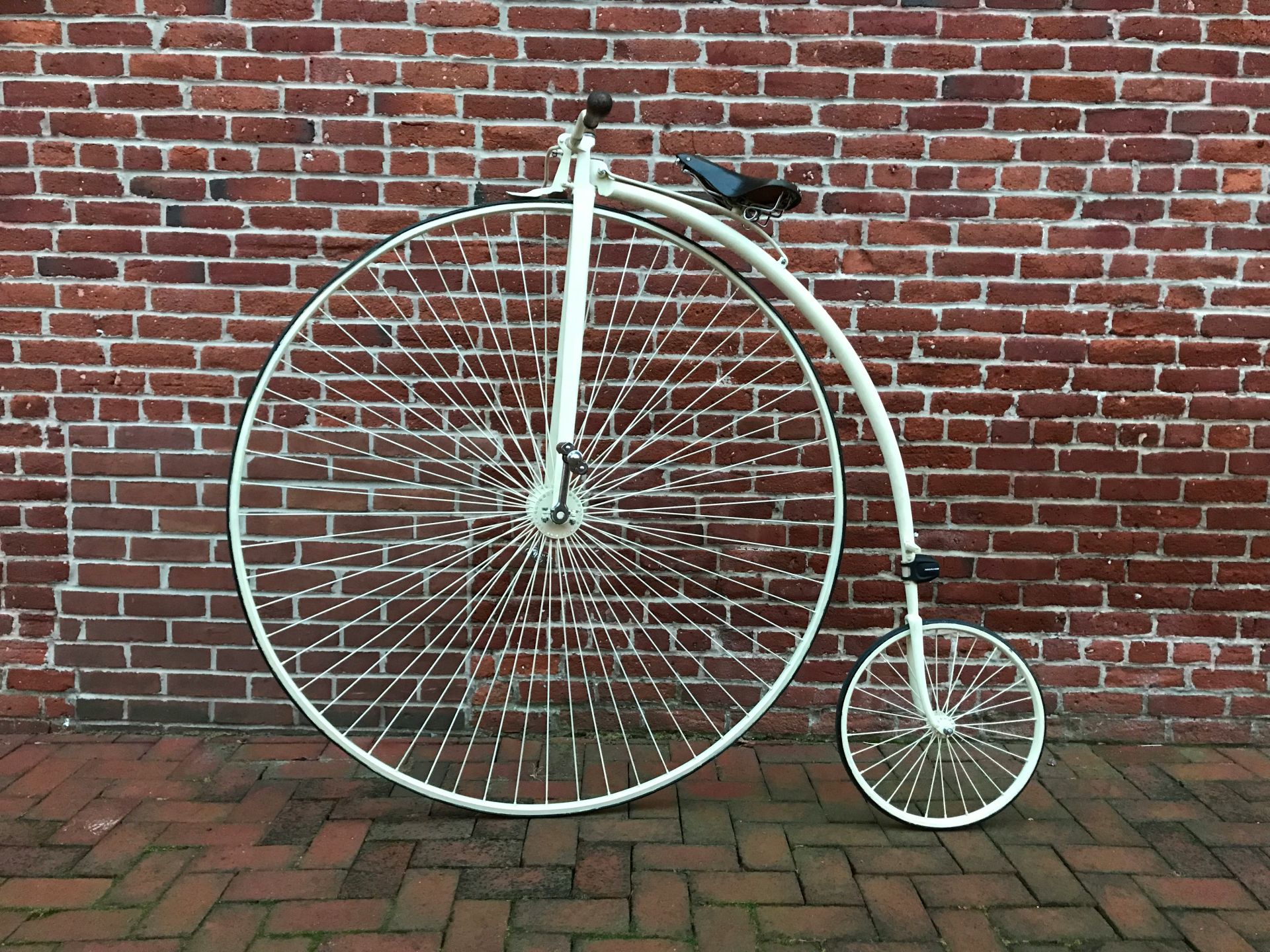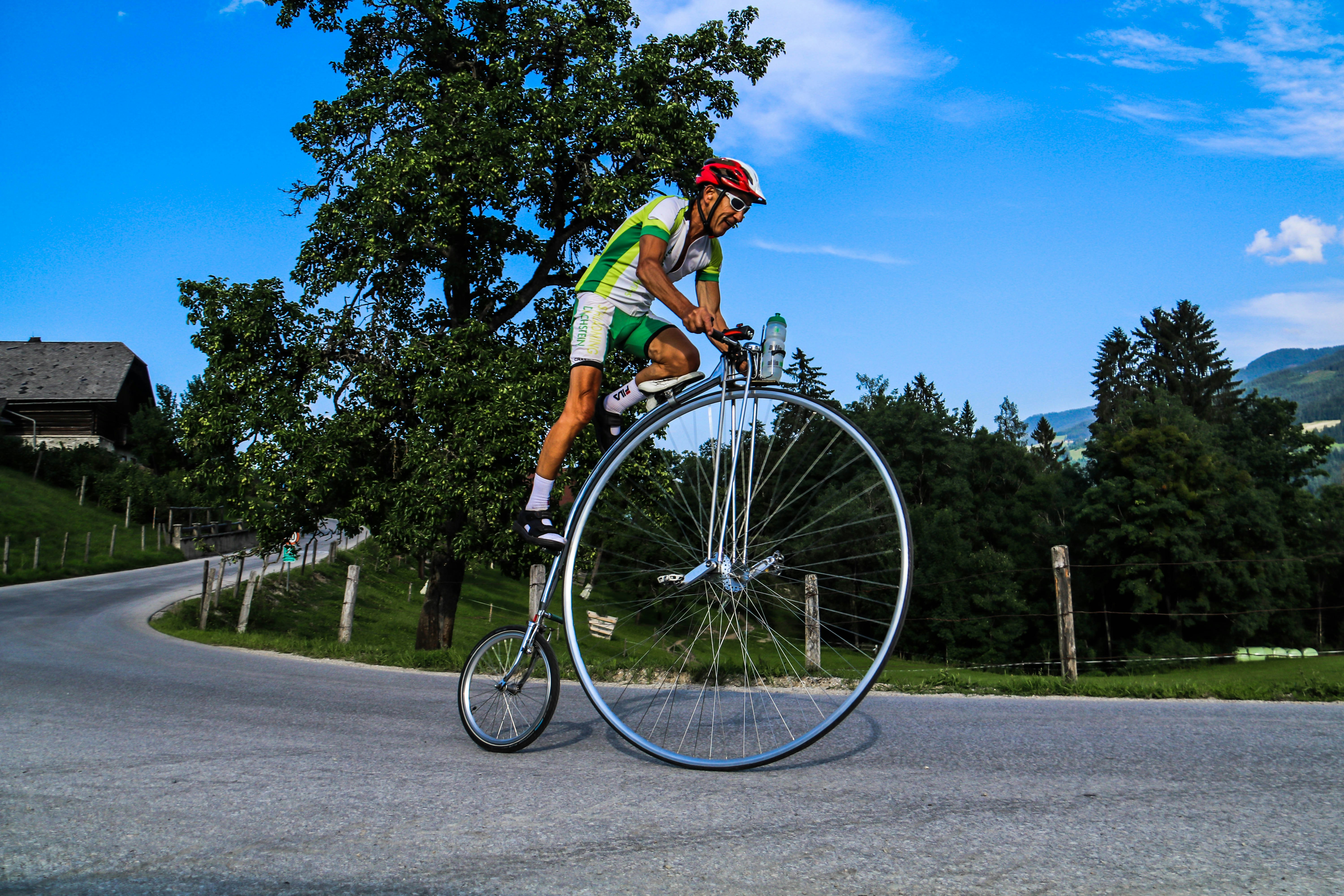
You've probably whizzed around on a bike before, but have you ever stopped to think about how this ingenious invention came to be? Believe it or not, bikes didn't always have pedals, chains and those handy brakes we take for granted today. The earliest versions were more like wooden scooters with wheels. It took years of tinkering by clever inventors across Europe and North America to get us to the bicycles we know and love. In this article, we'll take a look back at some of those early designs and innovations that paved the way for modern cycling. From the first Draisine 'running machine' in 1817 to the development of the safety bicycle in the 1880s, it's a fascinating story of engineering evolution. So let's hop on and take a ride through the origins of one of humankind's most popular modes of transport!
Imagine a world without bicycles. No leisurely Sunday rides, no thrilling mountain bike trails, no Tour de France. Hard to picture, isn't it? Well, before the bicycle as we know it today, there was the draisine – the first human-powered, two-wheeled contraption that paved the way for pedal power.
Origins of the Draisine
In 1817, Baron Karl von Drais, a German inventor, unveiled his revolutionary "laufmaschine" or "running machine." This early precursor to the bicycle featured two inline wheels connected by a wooden frame. The rider would straddle the frame and propel themselves forward by pushing off the ground with their feet.
The Draisine Craze
As quirky as it sounds, the draisine quickly became a craze across Europe. Nobles and commoners alike took to these "dandy horses," as they were nicknamed, to get around town. However, the draisine had its limitations – it couldn't climb hills, and stopping was a challenge. But its novelty sparked imaginations and set the stage for future innovations.
Legacy of the Draisine
While the draisine itself faded into obscurity, its impact was profound. It demonstrated the potential for human-powered transportation and inspired others to refine the design. Subsequent inventions like the velocipede and penny-farthing built upon the draisine's foundation, eventually leading to the modern bicycle we cherish today.
So the next time you hop on your bike, take a moment to appreciate the humble beginnings of this ingenious machine. The draisine may have been a quirky contraption, but it was the first step towards the cycling revolution we now enjoy.
In the early 19th century, a new mode of transport was pedalling its way into existence. You've heard of the Penny-farthing bicycles with their comically large front wheel? Well, they actually evolved from earlier prototypes like the velocipede and boneshaker.
These primitive two-wheelers were the first human-powered vehicles to use a pedalling system, paving the way for modern bicycles as we know them. Talk about putting the "cycle" in bicycle!
The Velocipede Craze
Invented in 1817 by the German Baron Karl von Drais, the velocipede (aka the "draisine" or "hobby horse") was the world's first widely-recognised bicycle-like contraption. Its simple design featured two in-line wheels joined by a wooden frame, which you propelled along by pushing with your feet while straddling the body.
The velocipede sparked a brief craze across Europe and America in the 1810s-1820s. Cycling clubs sprouted up, dedicated paved paths were constructed, and top riders could clock speeds over 15mph! Not bad for footpower.
Boneshakers: A Bumpy Ride
While the velocipede got the ball rolling, it wasn't until the 1860s that pedalling was introduced on a two-wheeler. Enter the bone-shaking "boneshaker" bikes - so named for their rigid iron frames and wooden spoke wheels that transmitted every bump in the road directly to the rider's bones!
Despite their spine-jangling qualities, boneshakers brought key advances like pedals on the rear wheel hub and a rudimentary steering mechanism. Suddenly, getting around under your own power was faster and easier than ever before. The bicycle was evolving rapidly.

Can you imagine riding a bicycle with a massive front wheel and tiny rear wheel? That was the reality of the penny-farthing, an iconic early bicycle design from the 1870s. These quirky contraptions stood over 5 feet tall, making mounting and dismounting a precarious affair!
Despite their impracticalities, penny-farthings represented a significant stride in cycling innovation. The larger front wheel helped increase speed and distance, evolving bicycle design beyond its humble "hobby-horse" roots.
The Birth of the Safety Bicycle
As penny-farthings' risks became apparent, inventors sought a safer alternative. In 1885, John Kemp Starley unveiled the Rover Safety Bicycle - the blueprint for modern bicycles.
Its two same-sized wheels, diamond frame, and chain-driven gear system made for a sturdier, more balanced ride. Suddenly, bicycles were accessible to everyone - not just daring daredevils!
Creature Comforts
Early safety bicycles still lacked key features we take for granted today. Pneumatic tyres, coaster brakes, and multiple gears were yet to come. But their basic design sparked a revolution in personal transportation.
As materials and manufacturing improved, bicycles grew lighter, sleeker, and increasingly user-friendly. The clunky bone-shakers of yesteryear had evolved into efficient machines primed to conquer roads and trails alike.
Bicycles' transformation from eccentric novelties to modern marvels was decades in the making. But that bumpy journey paved the way for the bikes we know and love today. So next time you hop on your trusty two-wheeler, remember the wild rides that kicked it all off!
So there you have it - a quick spin through the history of one of humankind's most liberating inventions. From clunky contraptions with wooden wheels to the sleek, lightweight bikes we know and love today, the evolution of the bicycle has been a wild ride. Its early pioneers paved the way for cycling to become the popular global pastime it is now. Next time you hop on your bike for a leisurely pedal or adrenaline-pumping mountain trail, spare a thought for these pioneering velocipede pilots. Their determination to make cycling faster, lighter and more accessible is the reason you can feel the wind in your hair and freedom at your fingertips whenever you saddle up. Our modern lives would look very different without the humble bicycle, so be sure to appreciate its rich heritage during your next two-wheeled adventure.
The Draisine: The First Two-Wheeled Ride
Imagine a world without bicycles. No leisurely Sunday rides, no thrilling mountain bike trails, no Tour de France. Hard to picture, isn't it? Well, before the bicycle as we know it today, there was the draisine – the first human-powered, two-wheeled contraption that paved the way for pedal power.
Origins of the Draisine
In 1817, Baron Karl von Drais, a German inventor, unveiled his revolutionary "laufmaschine" or "running machine." This early precursor to the bicycle featured two inline wheels connected by a wooden frame. The rider would straddle the frame and propel themselves forward by pushing off the ground with their feet.
The Draisine Craze
As quirky as it sounds, the draisine quickly became a craze across Europe. Nobles and commoners alike took to these "dandy horses," as they were nicknamed, to get around town. However, the draisine had its limitations – it couldn't climb hills, and stopping was a challenge. But its novelty sparked imaginations and set the stage for future innovations.
Legacy of the Draisine
While the draisine itself faded into obscurity, its impact was profound. It demonstrated the potential for human-powered transportation and inspired others to refine the design. Subsequent inventions like the velocipede and penny-farthing built upon the draisine's foundation, eventually leading to the modern bicycle we cherish today.
So the next time you hop on your bike, take a moment to appreciate the humble beginnings of this ingenious machine. The draisine may have been a quirky contraption, but it was the first step towards the cycling revolution we now enjoy.
19th Century Innovations: Velocipedes, Boneshakers and More
In the early 19th century, a new mode of transport was pedalling its way into existence. You've heard of the Penny-farthing bicycles with their comically large front wheel? Well, they actually evolved from earlier prototypes like the velocipede and boneshaker.
These primitive two-wheelers were the first human-powered vehicles to use a pedalling system, paving the way for modern bicycles as we know them. Talk about putting the "cycle" in bicycle!
The Velocipede Craze
Invented in 1817 by the German Baron Karl von Drais, the velocipede (aka the "draisine" or "hobby horse") was the world's first widely-recognised bicycle-like contraption. Its simple design featured two in-line wheels joined by a wooden frame, which you propelled along by pushing with your feet while straddling the body.
The velocipede sparked a brief craze across Europe and America in the 1810s-1820s. Cycling clubs sprouted up, dedicated paved paths were constructed, and top riders could clock speeds over 15mph! Not bad for footpower.
Boneshakers: A Bumpy Ride
While the velocipede got the ball rolling, it wasn't until the 1860s that pedalling was introduced on a two-wheeler. Enter the bone-shaking "boneshaker" bikes - so named for their rigid iron frames and wooden spoke wheels that transmitted every bump in the road directly to the rider's bones!
Despite their spine-jangling qualities, boneshakers brought key advances like pedals on the rear wheel hub and a rudimentary steering mechanism. Suddenly, getting around under your own power was faster and easier than ever before. The bicycle was evolving rapidly.
Penny-Farthings to Safety Bicycles: The Evolution of Modern Design

Can you imagine riding a bicycle with a massive front wheel and tiny rear wheel? That was the reality of the penny-farthing, an iconic early bicycle design from the 1870s. These quirky contraptions stood over 5 feet tall, making mounting and dismounting a precarious affair!
Despite their impracticalities, penny-farthings represented a significant stride in cycling innovation. The larger front wheel helped increase speed and distance, evolving bicycle design beyond its humble "hobby-horse" roots.
The Birth of the Safety Bicycle
As penny-farthings' risks became apparent, inventors sought a safer alternative. In 1885, John Kemp Starley unveiled the Rover Safety Bicycle - the blueprint for modern bicycles.
Its two same-sized wheels, diamond frame, and chain-driven gear system made for a sturdier, more balanced ride. Suddenly, bicycles were accessible to everyone - not just daring daredevils!
Creature Comforts
Early safety bicycles still lacked key features we take for granted today. Pneumatic tyres, coaster brakes, and multiple gears were yet to come. But their basic design sparked a revolution in personal transportation.
As materials and manufacturing improved, bicycles grew lighter, sleeker, and increasingly user-friendly. The clunky bone-shakers of yesteryear had evolved into efficient machines primed to conquer roads and trails alike.
Bicycles' transformation from eccentric novelties to modern marvels was decades in the making. But that bumpy journey paved the way for the bikes we know and love today. So next time you hop on your trusty two-wheeler, remember the wild rides that kicked it all off!
Conclusion
So there you have it - a quick spin through the history of one of humankind's most liberating inventions. From clunky contraptions with wooden wheels to the sleek, lightweight bikes we know and love today, the evolution of the bicycle has been a wild ride. Its early pioneers paved the way for cycling to become the popular global pastime it is now. Next time you hop on your bike for a leisurely pedal or adrenaline-pumping mountain trail, spare a thought for these pioneering velocipede pilots. Their determination to make cycling faster, lighter and more accessible is the reason you can feel the wind in your hair and freedom at your fingertips whenever you saddle up. Our modern lives would look very different without the humble bicycle, so be sure to appreciate its rich heritage during your next two-wheeled adventure.

 Renting a High-End Road Bike in Lanzarote: What to Expect
Renting a High-End Road Bike in Lanzarote: What to Expect




